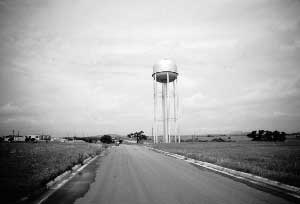MENU
|
| |
Confinement and Ethnicity: An Overview of World War II Japanese American Relocation Sites by J. Burton, M. Farrell, F. Lord, and R. Lord |

|
|
| |
Chapter 17 (continued)
Department of Justice and U.S. Army Facilities
U.S. Army Facilities
Fort Sill, Oklahoma
 Figure 17.53. Area 2400, Fort Sill, Oklahoma. (from Walls 1987) |
The Fort Sill Military Reservation is now the headquarters of the U.S. Army Field Artillery. The old fort area established in 1869 is now a National Historic Landmark. It is not clear where on the expansive military base the Japanese Americans were held, but the current fort archeologist noted that in "Area 2400" southwest of Sheridan and Hunt Roads a German POW camp was located (Spivey, personnel communication, 1999). It seems likely that the POW camp and Japanese American internment camp were one and same, as at other U.S. Army facilities. The area has been cleared for the most part and some new buildings have been constructed in the area (Figure 17.53). It is not known if slab foundations still present at the site date to the internment.
 Top
Top
Last Modified: Fri, Sep 1 2000 07:08:48 pm PDT
http://www.cr.nps.gov/history/online_books/anthropology74/ce17m.htm
![]()

